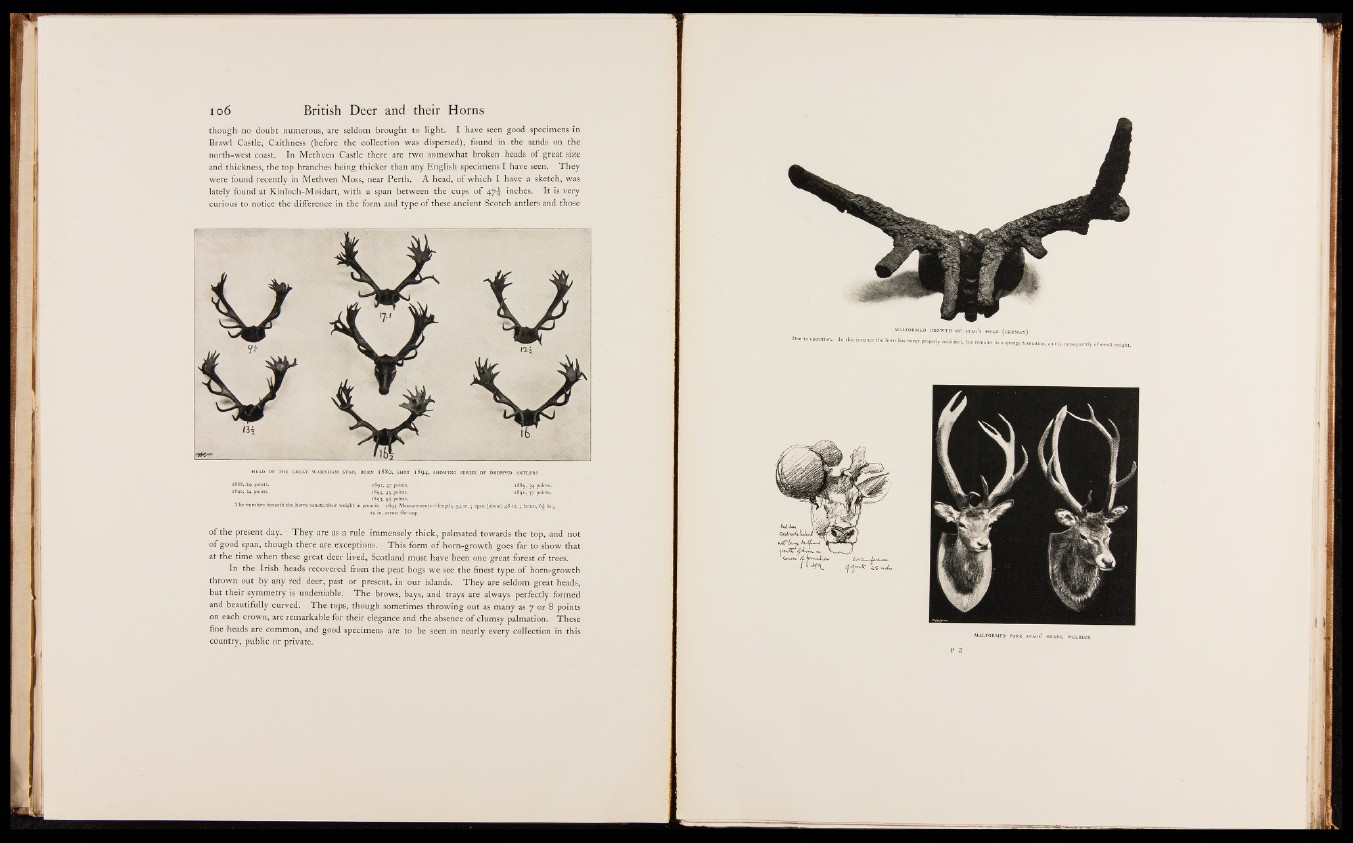
though no doubt numerous, are seldom brought to light. I have seen good specimens in
Brawl Castle, Caithness (before the collection was dispersed), found in the sands on the
north-west coast. In Methven Castle there are two somewhat broken heads o f great size
and thickness, the top branches being thicker than any English specimens I have seen. They
were found recently in Methven Moss, near Perth. A head, o f which I have a sketch, was
lately found at Kinloch-Moidart, with a span between the cups' o f inches. It is very
curious to notice the difference in the form and type o f these ancient Scotch antlers and those
o f the present day. They are as a rule immensely thick, palmated towards the top, and not
o f good span, though there are exceptions. ■ This form o f horn-growth goes far to show that
at the time when these great deer lived, Scotland must have been one great forest o f trees.
In the Irish heads recovered from the peat bogs we see the finest type o f horn-growth
thrown out by any red deer, past or present, in our islands. They are seldom great heads,
but their symmetry is undeniable. T h e brows, bays, and trays are always perfectly formed
and beautifully curved. The tops, though sometimes throwing out as many as 7 or 8 points
on each crown, are remarkable for their elegance and the absence o f clumsy palmation. These
fine heads are common, and good specimens are to be seen in nearly every collection in this
country, public or private.
MALFORMED